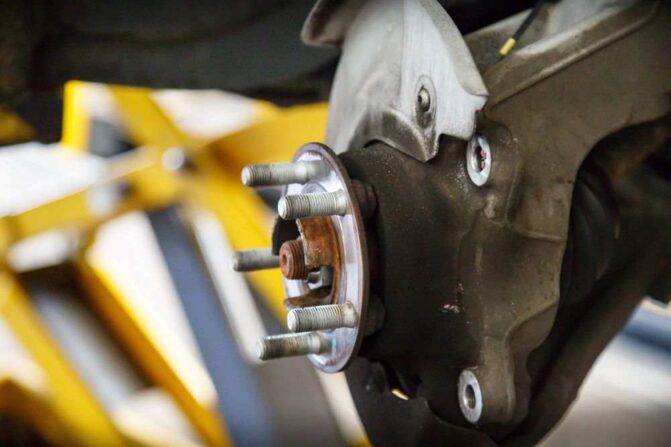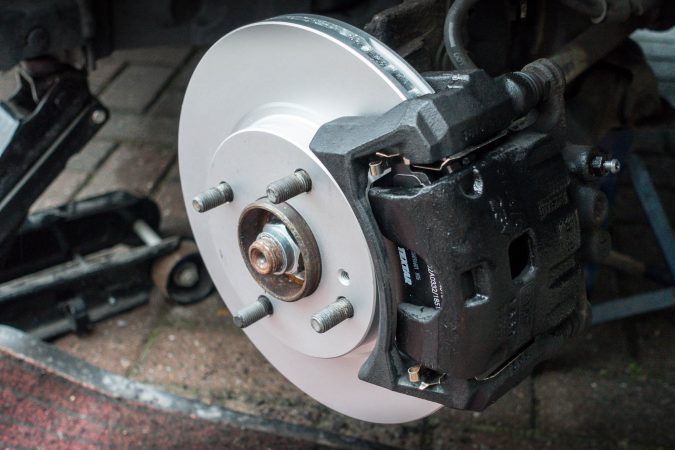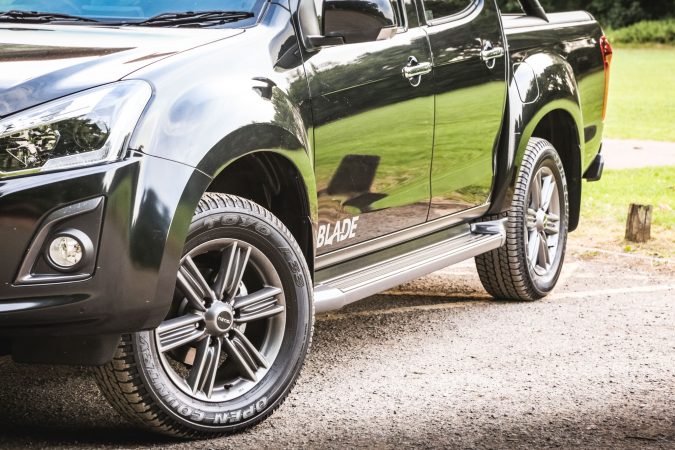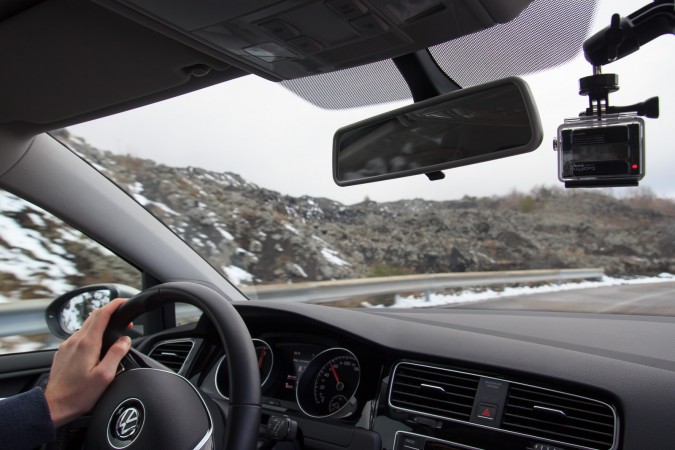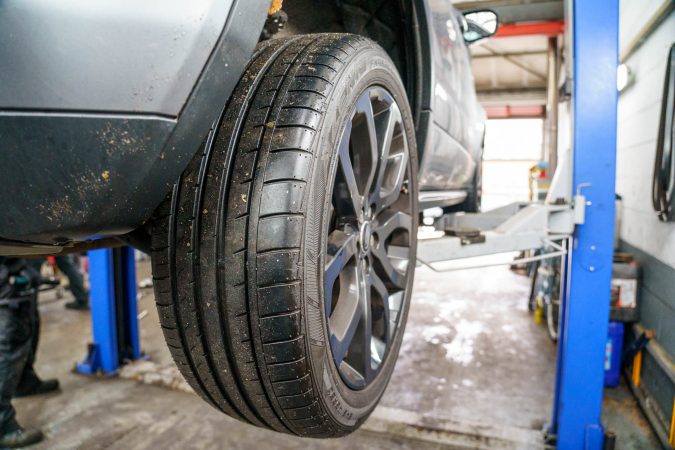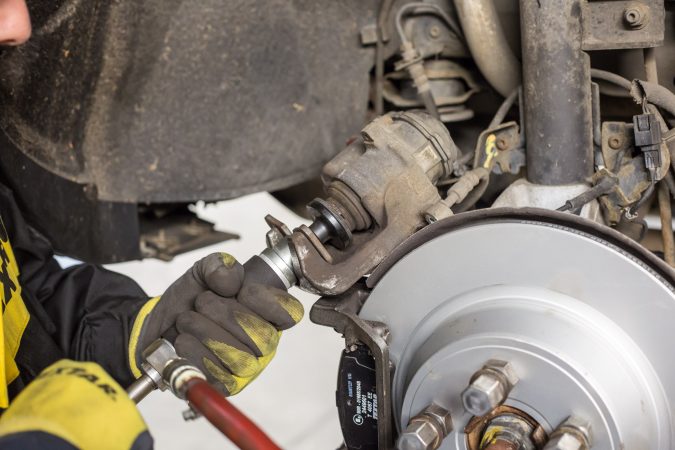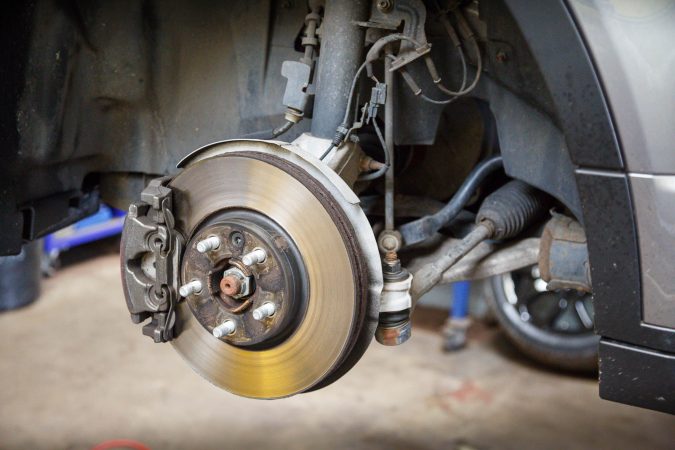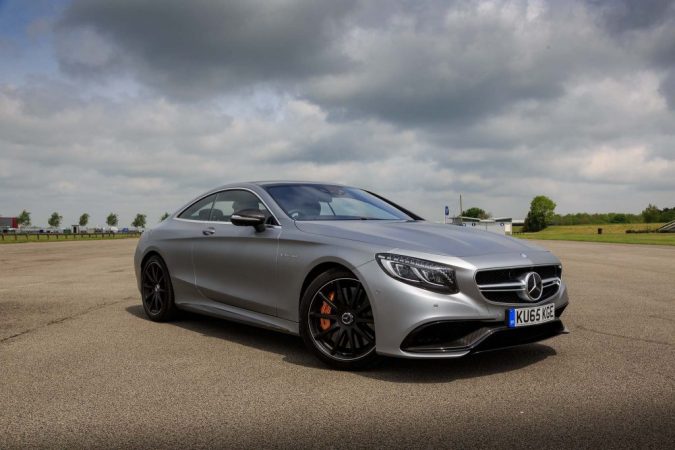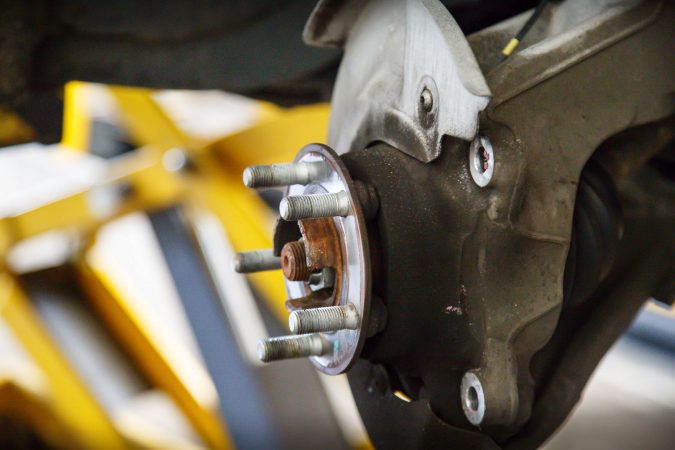You may have read or heard about wheel bearings, and maybe you’re wondering about the wheel bearing replacement cost. But what exactly are they? A wheel bearing is a set of steel balls or rollers wrapped in a metal ring that sits inside a hollow piece of metal at the center of your wheel hub. The wheel bearing rides on your car’s axle shaft, helping to reduce friction as the wheel spins allowing for a smooth ride.
There are several types of car wheel bearings that are used in cars which we will discuss further, but every car has a wheel bearing on each of its wheels and it is essential for your car to run smoothly.
It is important to have the best wheel bearing installed on your car to have the weight evenly distributed on the wheels.
Since they support your car’s weight while you’re driving, wheel bearings are prone to get abused. This is especially true if you drive on rough and bumpy roads with lots of potholes. Other driving conditions such as excessive water and mud can also cause the wheel bearing to excessively erode over time.
Just like almost any other car part, wheel bearings will wear out over time. On top of that, a major accident can also cause significant damage to the wheel bearings. We’ll be discussing further the types of wheel bearings, the signs you should look out for, and of course, how much you should expect to pay for the replacement cost.
- Types Of Wheel Bearings
- Signs Of Worn-Out Bearings
- Why Change The Bearings?
- Common Types Of Assemblies
- Wheel Bearing Replacement Cost
- How Long Do They Last?
- Tips To Extend Their Life
- Final Conclusion
- Frequently Asked Questions (FAQs)
Types Of Wheel Bearings
Different manufacturers will use different types of wheel bearings for their own reasons, some are easier to manufacture, and other types will allow for more performance in the vehicle. Here are some commonly used types of wheel bearings:
1. Ball Bearings
This is one of the most commonly used types of bearings as they are very versatile and simple. They can cope with radial loads (the load of the vehicle that is on the wheel) as well as the thrust load (cornering pressure) fairly well. You’ll find this in most cars, bikes, and even roller skate wheels.
2. Precision Ball bearings
These are similar to ball bearings. However, their rotation speed is higher compared to standard ball bearings and they reduce friction which then reduces the amount of heat generated, allowing them to cope with even larger amounts of load and pressure.
These benefits allow for more performance to be squeezed out of the car. Since they can cope with larger amounts of pressure, they can be used for more extreme and demanding purposes. You’ll typically find this type of bearings in race cars, performance or exotic cars, and even airplanes.
3. Roller Bearings
You probably won’t find this type of bearings in a motor vehicle, as they don’t handle cornering pressure very well. They can only handle loads at low to medium speeds. You’ll typically find this mostly in shopping carts or hand trucks.
4. Tapered Roller Bearings
Tapered roller bearings are also commonly used in cars and trucks. Instead of a ball, they will have cone-shaped roller bearings which help with cornering pressure. For this reason, tapered roller bearings are used more commonly compared to standard roller bearings.
Bad Bearing Symptoms
If you’d like to physically check the ball bearings on your car, you’d have to take apart your suspension assembly. The video below shows how you can take apart and check your wheel bearings:
Understandably, not everyone will have the skill or time necessary to physically check the condition of their car’s wheel bearing. Thankfully, you can look for other telltale signs to see if your car has a worn or damaged wheel bearing. Here are the symptoms you should look out for:
Wheel Bearing Replacement Cost, Symptoms #1. Uneven Tire Wear
A worn-out or bad wheel bearing can cause your wheel to be loose or cause more vibration to happen during driving. This, in turn, will result in uneven tire wear, as each wheel is going through different levels of vibration. Loose wheels also mean they sit differently compared to the others, causing further uneven tire wear.
Make sure to check each tire if you’re doing tire rotations or changing your tires if you suspect you have a bad wheel bearing.
Keep in mind that unbalanced tires can cause uneven tires as well. A bad wheel alignment can also cause uneven tire wear in your car. So, don’t immediately assume it’s because of a bad wheel bearing, make sure the other symptoms match up as well.
Wheel Bearing Replacement Cost, Symptoms #2. Humming Or Grinding Noises
Another common symptom of bad wheel bearings is loud noises from the tires. Bad wheel bearings lose lubricity resulting in increased friction, which in turn causes the noises. It usually sounds like two pieces of metal rubbing against each other, often producing a humming noise as you drive.
Bad wheel bearings lose lubricity resulting in increased friction, which in turn causes the noises.
If the sound gets louder the faster you drive, then chances are it’s the wheel bearing that’s making the noise. If you’re hearing unusual noises from your car but are not entirely sure what it is, you can watch the video below as a reference:
If you hear a loud, unusual, and persistent noise as you drive along it’s best to get it checked. Regardless of the cause, cars are not really supposed to make loud noises as they drive. Except of course for the engine, wind, and tire noise.
Wheel Bearing Replacement Cost, Symptoms #3. Steering Wheel Vibration
If the wheel bearings are in a really bad state, it’s likely your steering wheel will start to vibrate as you drive along. It’s usually present at lower speeds and gets worse as you drive along just like the grinding noises.
Keep in mind that steering wheel vibration might also be caused by unbalanced tires. However, vibrations caused by unbalanced tires normally occur only at high speeds, usually above 60mph or highway speeds. While steering wheel vibration caused by a bad bearing can occur at speeds below that.
If you are experiencing steering wheel vibration you might want to get your tires balanced to see if the problem persists. If it does, then it’s possible the vibration is caused by bad wheel bearings. That being said, if you’ve had your tires balanced recently then there’s no need to do so. It usually takes about a year or two for steering wheel vibration to reappear after a tire balancing.
Another symptom that you can tell from the steering wheel is the car feeling loose. This one’s slightly more difficult to convey and unless you’re a keen driver you might not notice it at all. But a car with a bad wheel bearing tends to feel loose, meaning the handling feels less precise. This is due to excess wobble in the wheels caused by bad bearings, which segues us to the next symptom:
Wheel Bearing Replacement Cost, Symptoms #4. Excess Wobble Or Play In The Wheels
To diagnose this symptom, you will need to lift your car and have all four wheels (fun fact, go check out our explainer on how many wheels are there in the world and are there more doors than wheels, as well as how many wheels are in the world, in addition to are there more doors or wheels in the world) up on jack stands. When lifted, grab each wheel and try rocking it backward and forward. If there’s wobble or excess “play” in the wheels, then it’s likely you have a bad wheel bearing.
Normally a car’s wheels shouldn’t wobble when being rocked, they should stay firmly in place. But if it does then you’ll need to get it checked. In any case, having an excess of wobbles on your wheels can be very dangerous when driving.
On top of these symptoms, if you’re driving a newer car be on the lookout for the ABS light on your dashboard. The ABS light can mean a variety of things, usually brake-related. However, manufacturers often also use the ABS light to signify a problem with the wheel bearing as well.
If you notice those symptoms and the ABS light is on, you might want to go to a repair shop. It would be wise to diagnose the problem and fix it as soon as possible.
Wheel Bearing Replacement Cost, Symptoms #5. Reduced Driving Quality
When the wheel bearings are not functioning properly, it can affect the overall driving quality of your vehicle. The handling might become less responsive, and you might feel that the car is dragging, especially when you try to accelerate. This happens because the bad bearings create resistance, making it hard for the wheels to move freely. You might also feel that your vehicle is pulling to one side, even if you have just had a wheel alignment. This is due to the uneven distribution of load caused by the faulty bearings.
Remember, reduced driving quality can also be caused by other issues, such as problems with the suspension system or brake issues. So, if you experience these symptoms, it is always a good idea to get a professional to diagnose the issue properly.
Wheel Bearing Replacement Cost, Symptoms #6. Reduced Fuel Efficiency
Bad wheel bearings can also lead to reduced fuel efficiency. Since the bearings are not functioning properly, the wheels face resistance while moving, which means the engine has to work harder to keep the car moving. This results in increased fuel consumption. If you notice that you are filling up your tank more often than usual, and there are no other apparent reasons for it, bad wheel bearings might be the cause.
However, remember that reduced fuel efficiency can be caused by various other issues as well, such as underinflated tires, or a problem with the engine. So, it’s always recommended to get a thorough check-up of your vehicle if you notice a sudden decrease in fuel efficiency.
Wheel Bearing Replacement Cost, Symptoms #7. Abnormal Tire Movement
Abnormal tire movement is another symptom of bad wheel bearings. If you notice that your tires are moving in an unusual manner, for example, if they are moving side-to-side excessively while you are driving, it might be because of faulty wheel bearings. The wheel bearings play a crucial role in ensuring that the wheels move in a smooth and controlled manner. When they are worn out or damaged, they can cause the wheels to move abnormally.
To check for this symptom, you can perform a simple test. Park your car on a flat surface and turn the steering wheel from side to side. If you notice that the tires are moving excessively or in an abnormal manner, it might be because of bad wheel bearings.
Wheel Bearing Replacement Cost, Symptoms #8. Difficulty in Steering
Difficulty in steering is another common symptom of bad wheel bearings. If you find it hard to turn your steering wheel, or if the steering feels heavy and less responsive, it might be because of faulty wheel bearings. The wheel bearings play a vital role in the functioning of the steering system, and when they are not working correctly, it can make steering difficult.
However, difficulty in steering can also be caused by other issues, such as problems with the power steering pump or a low level of steering fluid. So, it is essential to get a thorough diagnosis to determine the exact cause of the problem.
Wheel Bearing Replacement Cost, Symptoms #9. Visible Damage or Leaks
Sometimes, the wheel bearings can get damaged to the point where you can see visible signs of damage or even leaks. If you notice any grease leaking from around your wheels or any visible damage, such as cracks or breaks in the wheel bearing seal, it is a clear sign that your wheel bearings need to be replaced.
Remember, it is crucial to address this issue as soon as possible, as driving with damaged or leaking wheel bearings can be extremely dangerous.
Wheel Bearing Replacement Cost, Symptoms #10. ABS Malfunction
As previously mentioned, a faulty wheel bearing can sometimes trigger the ABS light on your dashboard. However, it can also cause the ABS system to malfunction. The wheel bearings often contain sensors that provide information to the ABS system. When the wheel bearings are not functioning correctly, it can lead to incorrect or no information being sent to the ABS system, causing it to malfunction.
If you notice that your ABS system is not working as it should, it is crucial to get it checked as soon as possible, as it is a vital safety feature of your vehicle.
In conclusion, bad wheel bearings can cause a variety of issues with your vehicle, from abnormal noises and vibrations to reduced driving quality and even safety system malfunctions. It is crucial to address this issue as soon as possible to ensure your safety and the safety of others on the road. If you notice any of these symptoms, it is always recommended to get a professional to diagnose and fix the issue.
Can You Drive On Bad Wheel Bearing
We’re all a little guilty of putting off repairs on our cars sometimes. Even we car enthusiasts have done it from time to time. Whether it’s because of financial reasons, lack of time to get around to it, or just borderline procrastination. We’re not proud of it, but we’ve all delayed repairs on our cars for some reason.
However, as mentioned previously, wheel bearings are essential in providing a smooth ride while you drive. It is also responsible for your car’s load and weight as you drive along. For these reasons, it’s important to make sure they are always in good condition.
Of course, you can technically still drive your car with a bad wheel bearing. But the longer you wait on replacing it, the more damage it can cause to other parts of your car. Especially to the wheel and suspension assembly, which will cost you more money in the long run.
Bad wheel bearings can also make the car less controllable as you drive along. It affects the car’s handling significantly and puts you, your passengers, and other drivers around you at considerable risk. It’s best to have the wheel bearings replaced as soon as you confirm that it’s worn out or damaged.
It’s rare for the wheel bearing to experience immediate complete failure unless the car has been in an accident. But if you feel that there’s an issue with your wheel bearings, it’s recommended that you have it checked immediately. Visit your trusted repair shop to see how much damage there is on the wheel bearings. You can also ask them to assess how far is it from completely failing.
As the saying goes, better safe than sorry.
Wheel Hub Assembly
Wheel bearing replacement costs can vary depending on the type of car and the wheel bearing assembly. To help you understand how the assembly affects the wheel bearing replacement cost, here are the common types of wheel bearing and hub assembly and how they affect replacement cost:
1. Serviceable Hub Assembly
This is the simplest and easiest type of assembly to replace, as the wheel bearing is separated from the rotor or also known as the wheel hub. Replacing the wheel bearing in this assembly is fairly simple. The mechanic simply takes out the old bearing to replace it with a new one. They can do this without having to do much dismantling to the overall suspension assembly, costing you less labor cost.
2. Non-Serviceable Hub Assembly
Most new cars will have their wheel bearings come pre-packed with your wheel hub. Meaning the bearing sits in the wheel hub as one unit. This will be more costly to replace since you will need to replace the entire hub, not just the bearings.
While not very labor-intensive, it will cost you more money to replace. This is because you need to replace the entire wheel hub, which is slightly more difficult. Spare parts are going to be more expensive as well. The overall cost will of course depend on the type of vehicle that you have.
3. Non-Serviceable Hub Assembly With Press In Bearing
This assembly will require you to remove the wheel hub and put it in a press in order to remove the bearing. This is slightly more complicated so prepare yourself for a hefty bill. It’s much more labor-intensive to take apart, requiring more effort and tools, which makes wheel bearing replacement costs more expensive.
You’d want to leave your wheel bearing replacement to a mechanic unless you’re a professional mechanic yourself and have the necessary tools. If you’re not careful, improper installation of the bearings can cause premature wear and damage.
Wheel Bearing Replacement
As previously mentioned, cars come with different types of wheel bearings which means wheel bearing replacement cost varies from one car to another. To determine the actual cost, you’d have to confirm with your local dealership or your go-to local repair shop. However, here are some examples to give you a rough idea of how much it will cost:
Let’s take a 2018 Toyota Camry as the first example. If you were to replace the front wheel bearings and hub assembly the MSRP is $363. While a rear wheel hub and bearings will set you back $574. Note that this is the OEM price from Toyota and does not include labor costs.
As for the Camry’s compact little brother (just make sure you’re diligent about the problems with 2009 Toyota Camry), the Toyota Corolla, it will cost you $397 for each front wheel bearing and hub assembly, while the rear one costs $298 each.
Note that wheel bearing replacement costs can be higher in a sports car, a truck, or a luxury car. This isn’t always the case but it does happen with certain cars. The price difference can be either because of an overall more complicated assembly, or the manufacturer simply charging a premium for the spare parts.
For example, the list price of a wheel bearing replacement cost for a 2014-2019 Mercedes-Benz S63 AMG with AIRMATIC suspension is a hefty $970. Well above what you pay for a more “regular” car such as the Toyota Camry.
Keep in mind these prices are OEM (Original Equipment Manufacturer) parts and for the entire hub assembly. If your car doesn’t require it to replace the entire hub, i.e. you can replace just the wheel bearings, it will be much cheaper. The 2018 Toyota Corolla for example only costs $64 just for the wheel bearing itself.
Average Wheel Bearing Replacement Cost
On average, a wheel bearing alone will cost you between $60 – $150, and an entire bearing and hub assembly replacement are around $200 – $400 for each wheel depending on your vehicle type. There’s also labor cost which varies depending on how much your local repair shop or the dealership charge, but you can expect to pay anywhere between $70 – $280 which also depends on how many wheel bearing assemblies you’re repairing/replacing.
Overall, you can expect to pay around $400 – $800 to replace the bearing and hub assemblies on both sides of the axles, and if you’re replacing all four then it would be around twice that.
Again, these estimates are based on OEM parts. If you don’t mind using parts from 3rd party manufacturers such as MOOG for example, you can get a bearing and hub assembly for around $150, about half the price of an OEM part. Just be sure to check the reviews first to see other people’s experience and to make sure the product has good quality as well as a good warranty, so you’ll have peace of mind even though they’re not OEM parts.
| Wheel Bearing Replacement Cost (Samples) | ||
|---|---|---|
| Make And Model | Front Wheel Bearing + Hub Assembly | Rear Wheel Bearing + Hub Assembly |
| Toyota Camry | $363 | $574 |
| Toyota Corolla | $397 | $298 |
| Mercedes-Benz S63 AMG | $970 | $970 |
| Wheel Bearing Replacement Cost (Breakdown) | ||
| Wheel Bearing (x1) | Between $60 to $150 | |
| Bearing + Hub Assembly (x1) | Between $200 to $400 | |
| Labor Cost | Between $70 to $280 | |
| Total Average | Between $400 to $800 | |
How Long Should Wheel Bearings Last
On most modern cars, wheel bearings normally have a lifespan of around 85,000 to 100,000 miles. Of course, your failure rate may vary depending on your car model and driving conditions. If you often drive on bumpy roads with lots of potholes, it’s likely your wheel bearing’s lifespan will be shorter. But as a general rule of thumb, you should be fine up to 100,000 miles.
If you’re driving an older car, you might want to check around every 35,000 miles. Just to make sure they’re still in good condition. You’d want to maintain them better since older cars can be less reliable.
You can also check on online forums to see how long your car’s wheel bearing might last. Owners of certain car models often share their experiences online. It will also help you to learn if there are any manufacturer defects in your car, among other knowledge that could be useful. Keep in mind that you could use your car’s title to get money if you need some to cover some of these costs. Find out how much cash you could get with a car title loan.
Wheel Bearing Maintenance
So, now that you’ve diagnosed, identified, and have fitted in new wheel bearings on your car, what can you do to extend their lifespan so that you don’t have to change them again anytime soon?
As previously mentioned, rough roads can shorten your wheel bearing’s lifespan. So you might want to avoid driving on bumpy roads too often. You should also be more sympathetic to your car and take better care when going over a speed bump. Going too fast over a bump will be rough on your car’s wheel bearings. It might even damage other parts of the suspension or steering assembly.
On top of that, avoid driving through mud and deep water whenever you can. It might cause excess dirt and moisture to seep into the wheel bearings, wearing them out more quickly. Needless to say, we don’t want that.
Other than being more careful while driving, you should also make sure you go to the right repair shop. It’s crucial that you find a mechanic who knows your car well. Proper installation of the wheel bearings and hub assembly is important as a bad or improper installation may cause unnecessary damage to your wheel bearings over time. This will then shorten their lifespan even further.
If you don’t have a trusted repair shop or mechanic, try looking for reviews online of nearby repair shops. It will also be really good if any of the satisfied customers have the same car as you do, as it would mean the shop understands your car.
Wheel Bearing Replacement: Facts You Need to Know
- Wheel bearings support the weight of the vehicle at each of the four corners, and when they deteriorate, they can cause a humming or grinding noise.
- Old-fashioned wheel bearings were composed of two cone bearings on each front side, but most modern vehicles now use a hub bearing that consists of a bearing and flange surface bolted directly to the steering knuckle or rear transaxle.
- Wheel bearings can be either traditional cone or roller style or hub style, and come in both pressed-on and complete unit variations.
- Front-wheel bearings can be serviced during a brake job, and the cost of replacement varies depending on the style of bearing and the type of vehicle.
- Rear-wheel bearings can be either complete units or housed inside a solid axle, and replacement costs depend on the style of bearing and the type of vehicle.
- It is not safe to drive with a bad wheel bearing, as it can lead to instability and even a crash. The cost of replacement can be reduced by doing it yourself, but specialized tools are required.
- Inspecting wheel bearings involves raising the vehicle, trying to rock the tires, checking the lower ball joint, spinning the tire by hand, and listening for any grinding sounds.
- A noisy wheel bearing is a sign of wear, and driving on a damaged bearing can be dangerous due to increased friction and heat that can lead to complete failure.
- The cost of wheel bearing replacement varies depending on the type of bearing and the vehicle, and professional book times estimate the job to take around 4-6 hours.
- Regular maintenance and inspections can help prevent wheel bearing issues, and auto stores like AutoZone rent out specialized tools for free to aid in self-repair.
Wheel Bearing Replacement Cost: In Conclusion…
If your car is relatively new or the mileage is still comfortably below 100,000 miles, you can sit back and relax. Chances are your wheel bearings won’t be due for a replacement anytime soon. However, if your car is older or you notice some symptoms, then consider checking your car with a repair shop. It would be wise to check if there is damage to the wheel bearings or other components.
Major replacements such as wheel bearings can be costly and time-consuming. If you’re having trouble deciding on whether or not to make the repairs, you might want to consider how long you’re planning to keep your current car. If you’ve been thinking about buying a new car, it might be better to just get rid of your current car altogether. Finally, buy that shiny brand new car that you’ve been eyeing up.
If you’re planning to keep your current car for longer, then it’s best to go through with the repairs. As we’ve said, wheel bearings are essential to a car’s operation. Driving a car with bad wheel bearings can be very uncomfortable. Not to mention putting you and other drivers at risk as well.
Remember to check in with multiple mechanics and shops to make sure you get the best quote. This is also to ensure that your car will get the best service possible.
Wheel Bearing Replacement Costs: Frequently Asked Questions (FAQs)
If you still h have some lingering questions on the wheel bearing replacement cost, our FAQs here might have the answer…
What Is A Wheel Bearing
Wheel bearings are one of the most crucial components of your car, and in particular, the wheel assembly and steering setup. Their design is of a set of steel ball bearings, which are then held together within a metal ring. You can find wheel bearings connecting the wheels and axles together. The primary role of the wheel bearings is to ensure that your car’s wheels rotate smoothly, and with minimal friction required. In addition, they’re designed to be incredibly robust, thus withstanding excessive gravitational, acceleration, braking, and cornering loads while you’re driving.
How Much Does It Cost To Replace A Wheel Bearing
One thing you have to note while pondering over a wheel bearing replacement cost is the type of bearing you’re looking at. Differing cars (by their make and model) have varying types of bearings. As such, the cost to replace said wheel bearings may differ from one car to another. It’s generally cheaper for economy cars when compared to sports and luxury cars, not to mention trucks or 4x4s. On average, you can find a single wheel bearing unit setting you back between $60 to $150. Meanwhile, an entire hub assembly (which includes the wheel bearings) will cost between $200 to $400. Accounting for labor fees, you can expect a cost of anywhere from $400 to $800 to replace a wheel bearing.
What Does A Bad Wheel Bearing Sound Like
One of the most tell-tale signs that you need to consider a wheel bearing replacement cost is the sound that worn-out bearings make. The type of noise it makes can be described as a grinding or gyrating sort of sound. At times, you may also hear a sort of humming, rumbling, squealing, howling, scraping, or growling sound. These can easily be misdiagnosed for other problems, though. If these particular sounds get louder as you accelerate, then there’s a good chance that it could be the wheel bearings. Remember to pair these with other symptoms, such as uneven tire wear, steering wheel vibrations, and excess wobble in the wheels, if you want to confirm that it’s the wheel bearings that are at fault.
How To Tell If Wheel Bearing Is Bad
There are several ways that you can identify when your car’s wheel bearings need a replacement. For starters, listen out for any grinding, humming, rumbling, or squealing sounds. In particular, these sounds should get louder the faster you accelerate, if they’re related to the wheel bearings. You can match these up with other symptoms to clearly tell if the wheel bearing is bad or if it’s attributed to something else. For example, note if the tire tread wear is uneven. Alternatively, the steering wheel would vibrate a lot as you drive along. And, the wheels themselves would wobble and have some play or looseness in them.
How Long Do Wheel Bearings Last
Wheel bearings are typically designed to be robust, owing to how much stress and load that’s being put on them as you’re driving. As such, you can easily expect wheel bearings to last between 85,000 to 100,000 miles on average. However, these do vary a lot depending on the type of bearings you use. Not to mention, its build quality, what vehicle it’s fitted to, and your driving style. Heavy-duty and high-performance vehicles tend to wear out their wheel bearings rather quickly. Moreover, driving at higher speeds and with more aggression, or regularly trekking rough terrain will wear them out faster, too.
How Much to Replace Wheel Bearing
The cost to replace a wheel bearing can vary based on several factors. Generally, it ranges from $150 to $400 per wheel. The cost includes both the parts and labor. The price of the bearing itself can be between $40 to $100, while labor costs can range from $100 to $300. Keep in mind that costs can vary based on the make and model of your car, your location, and whether you go to a dealership or an independent mechanic. It’s always a good idea to get a few quotes to compare prices.
How to Replace a Wheel Bearing
Replacing a wheel bearing is a complex task that involves several steps. First, the car needs to be jacked up and the wheel removed. Then, the brake caliper and rotor are removed to access the wheel hub assembly. The old wheel bearing is then removed from the hub and the area is cleaned. The new bearing is then pressed into the hub, everything is reassembled, and the wheel is reattached. This is a general overview of the process, but it can vary based on the type of vehicle. It’s recommended to have a professional do this job, as it requires specialized tools and skills.
What Does a Wheel Bearing Do
The wheel bearing is a crucial component of your car’s wheel assembly. It allows the wheels to rotate smoothly and supports the weight of the vehicle. The wheel bearing is a set of steel balls or tapered rollers held together by a metal ring, known as a race. They help to reduce friction as the wheel spins and support the weight of the vehicle.
How Much to Fix Wheel Bearing
The cost to fix a wheel bearing ranges from $150 to $400 per wheel, which includes both parts and labor. The bearing itself usually costs between $40 to $100, while labor can range from $100 to $300. Costs can vary based on the make and model of your car, your location, and whether you go to a dealership or an independent mechanic. It is advised to get a few quotes to compare prices.
What Happens When a Wheel Bearing Goes Out
When a wheel bearing goes out, you may notice several signs. The most common one is a loud grinding or roaring noise that increases with the vehicle’s speed. Other signs include uneven tire wear, steering wheel vibration, and a wobbling wheel. If a wheel bearing fails completely, it can cause the wheel to come off the vehicle while driving. This is a very dangerous situation and should be avoided at all costs by replacing the wheel bearing as soon as you notice any symptoms.
How Long Does It Take to Replace a Wheel Bearing
It usually takes about 2 to 4 hours to replace a single wheel bearing, but this can vary based on the make and model of your vehicle and the type of bearing used. Some cars have press-in bearings which can take longer to replace because they require specialized tools and more labor. Other cars have bolt-on bearings, which can be quicker to replace. If you are replacing more than one wheel bearing, it will take additional time.
How Many Wheel Bearings Does a Car Have
Most cars have two wheel bearings per wheel, for a total of eight bearings on a four-wheeled vehicle. However, some cars have a single bearing assembly that integrates both the inner and outer bearings into one unit. In that case, there would be four wheel bearing assemblies, one for each wheel. It’s important to check your vehicle’s specifications to determine the exact number and type of wheel bearings your car has.
How Much Does It Cost to Have Lug Nuts Replaced
The cost to replace lug nuts can vary based on several factors, but it is generally not very expensive. The cost of the lug nuts themselves can range from $5 to $20 per nut, depending on the type and brand. Labor costs are usually minimal, as it does not take long to replace lug nuts. You may be charged a flat fee, or the cost could be included in a tire rotation or tire replacement service. Overall, you can expect to pay around $20 to $100 for parts and labor to replace all the lug nuts on one wheel.
What Is a Hub Bearing
A hub bearing, also known as a wheel hub bearing, is a type of wheel bearing that includes the hub assembly. The hub assembly is the part of the vehicle that the wheel attaches to. The hub bearing allows the wheels to rotate smoothly and supports the weight of the vehicle. Hub bearings are commonly found on modern vehicles and may include the wheel speed sensor, which is used by the ABS system.
What Does a Wheel Bearing Look Like
A wheel bearing is a set of small steel balls or tapered rollers held together by a metal ring, known as a race. It looks like a small metal ring with balls or rollers inside. The balls or rollers are sandwiched between two metal rings, an inner race, and an outer race. Wheel bearings come in different types and sizes, but they all serve the same purpose – to allow the wheel to spin smoothly and support the weight of the vehicle.
Where Is the Wheel Bearing Located
The wheel bearing is located inside the wheel hub assembly, which is attached to the vehicle’s axle. The wheel bearing is sandwiched between the axle and the wheel hub, and it allows the wheel to spin freely while supporting the weight of the vehicle.

